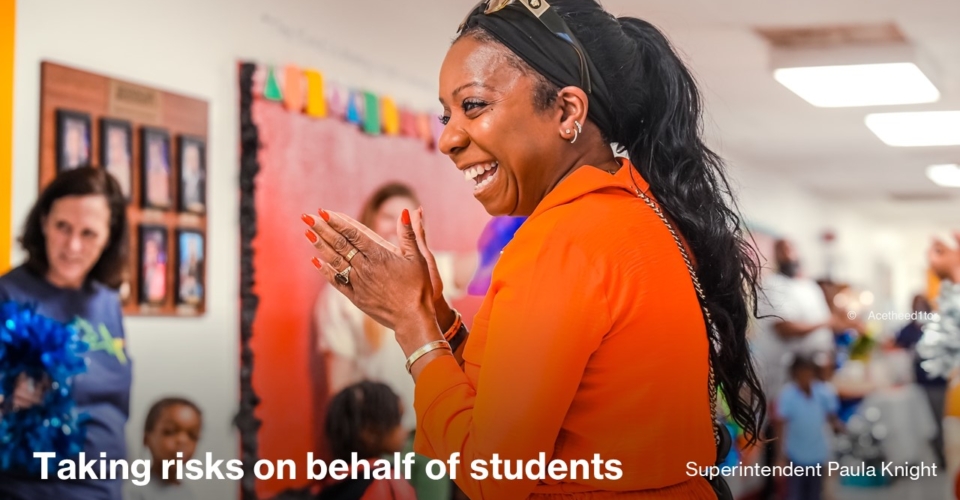It’s been five years since the pandemic temporarily forced schools to shift to teaching and learning online. The anniversary is a good opportunity to reflect on what we learned about classroom technology in the transition to all-digital instruction.
COVID rapidly accelerated the technology roadmap for K12 schools. Edtech innovations that were planned over a decade happened almost overnight. While this created significant challenges for teachers and K12 leaders alike, it also taught us how to deploy classroom technology more strategically.
Here are four key strategies that emerged from the experiences of schools in the last five years.
1. Standardize on classroom technology
When students in various classes or grade levels are using different kinds of devices, schools have to support multiple device types, which requires more time and money. IT technicians have to be skilled at configuring, supporting and repairing more than one kind of device, and schools have to maintain an inventory of spare parts for all of these devices.
What’s more, when students within the same classroom are using different devices, such as in a “bring your own device” initiative, it creates significant challenges for teachers. According to one report, school systems used more than 2,700 different edtech tools for instruction, on average, during the 2023-24 school year—more than three times the number used in 2018-19.
Teachers must be able to rely on these applications working seamlessly, regardless of the device a student is using.
Standardizing on a single device type throughout a school building has many advantages. Schools realize economies of scale in purchasing, configuring and supporting student devices.
Troubleshooting and maintaining the devices becomes easier when they’re all the same, and educators can have more confidence that everyone will be able to access the various instructional resources used in class.
2. Consider total cost of ownership
Obviously, devices must support a school’s instructional goals, but cost is a significant factor. One-to-one computing initiatives have been rolling out long enough for school leaders to realize that cost includes not just the purchase price but also support and maintenance—including but certainly not limited to the outlays required for security, peripherals, and mobile device management.
More from DA: 11 states are now rejecting Trump’s DEI in schools order
With cyberattacks against K12 school systems on the rise, choosing devices that are easier to secure has significant benefits for the total cost of ownership. The Chrome operating system has proven to be more secure than others, thanks to built-in security features such as verified boot (which checks for unexpected changes on startup), sandboxing (which ensures that any issues are kept isolated), and the inability for users to run random executable files.
These features make Chromebooks more secure than many other laptops. According to CVE Details, an independent source of security vulnerability data, ChromeOS has only had about 50 security vulnerabilities since 2010, CNET reports. Other OS platforms have seen thousands of vulnerabilities in the same time period.
3. Outsource maintenance and repairs
K12 technology staff are often stretched thin and are pulled in many directions. As a result, 56% of school district IT leaders say their departments struggle to provide instructional support for classroom technology use, according to the most recent EdTech Leadership Survey from the Consortium for School Networking.
Some 51% say they lack the staffing needed to integrate technology into the classroom effectively.
Outsourcing the maintenance and repair of student devices to a third-party provider frees up school and district edtech staff to focus on more strategic work, such as helping teachers use technology for instruction. An outside repair team also has spare parts and the elasticity in staffing that school systems may not and consequently, they can respond more quickly to minimize disruptions.
4. Stick to a consistent refresh cycle
The challenge of replacing aging devices at scale might have some edtech leaders trying to extend the life cycle of devices for as long as they can to defer replacement costs. But this strategy typically results in diminishing returns.
There is a major increase in failure rates beyond four years. Some educators will tell you that no one is harder on their mobile devices than students.
By implementing a reasonable and consistent refresh cycle, K12 leaders can minimize unpleasant surprises and head off a string of costly repairs that drive up the total cost of ownership over time.
Although it might seem like a daunting task, we have seen school districts of all sizes and demographics experience a significant rise in employee satisfaction and increase in student uptime, while also seeing a decline in breakage and maintenance costs when they standardized classroom devices, prioritized security, outsourced their device maintenance, and developed a consistent and reasonable refresh cycle.
It takes a bit of strategic planning in the beginning but the benefits for the future are immeasurable.



